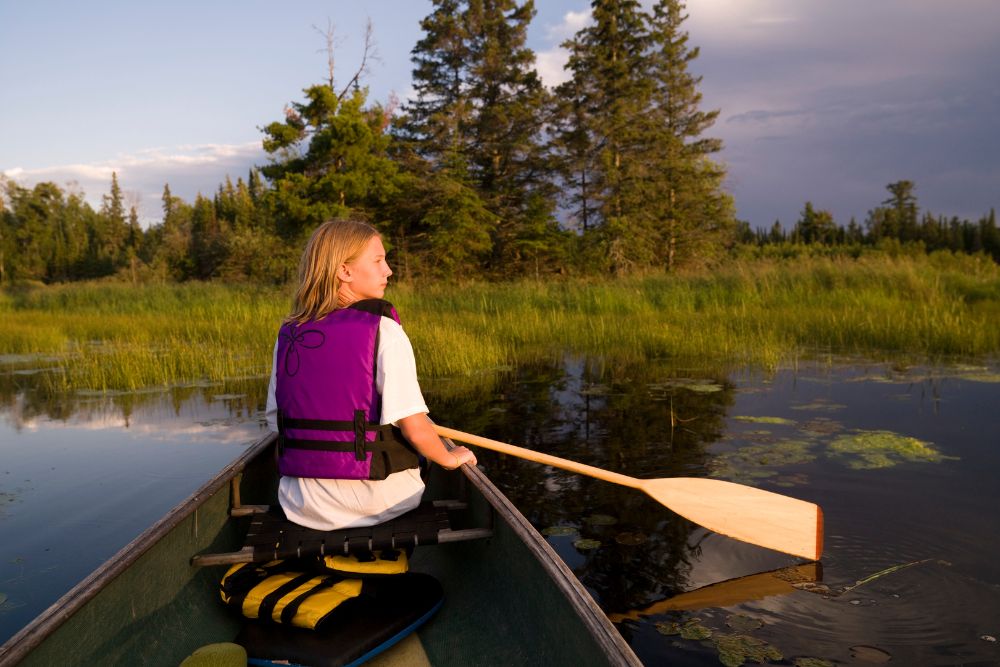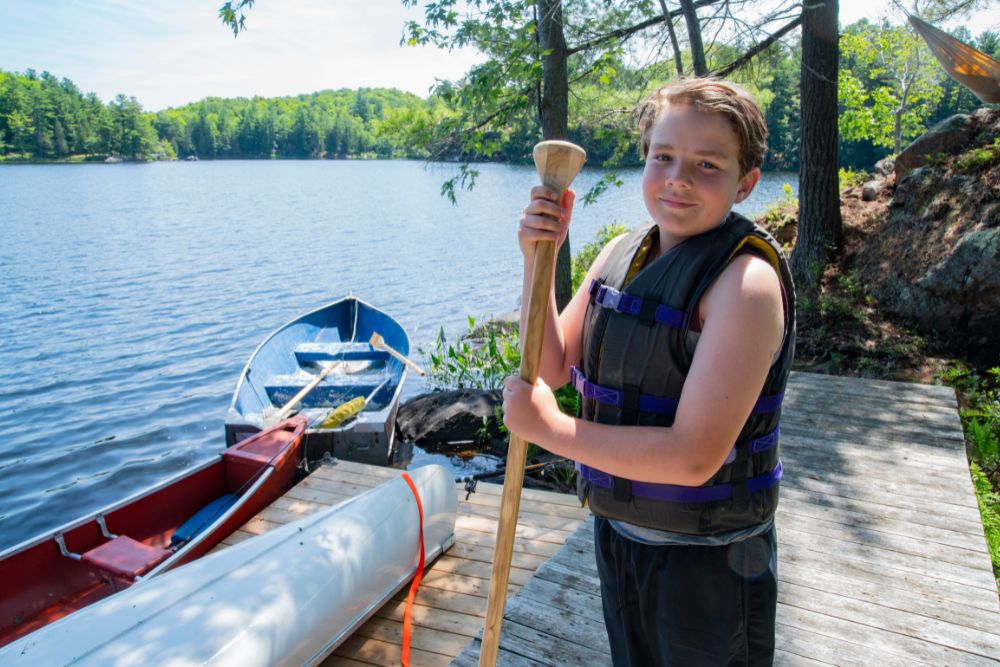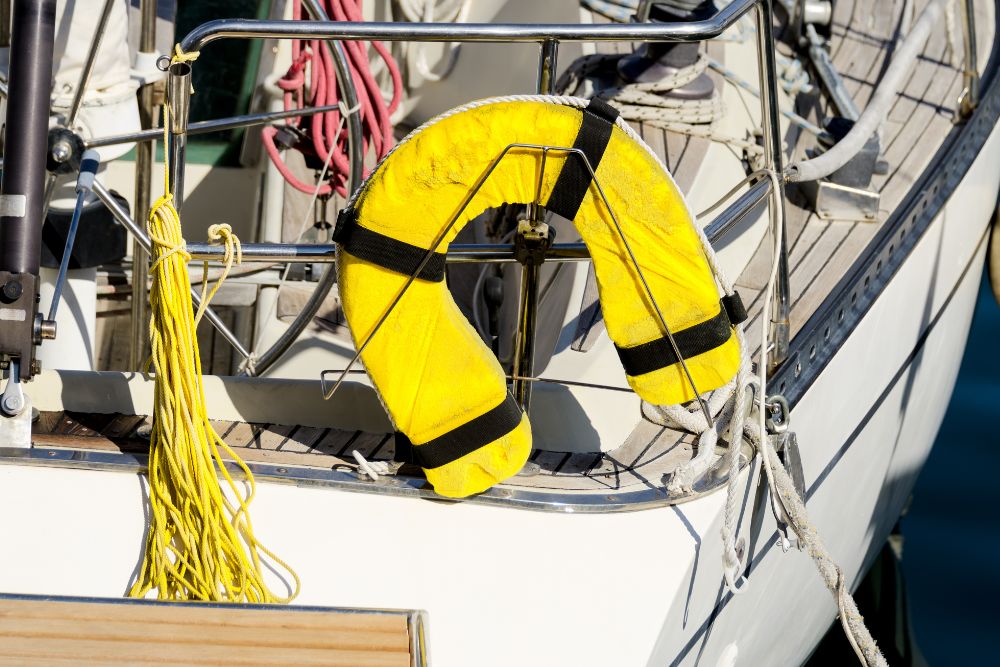Getting out on the open water and enjoying some fun in the sun is a great way to spend a nice summer day! But before you set sail, there’s one important question you need to answer: where will you put your PFDs?
There are a few things to consider when deciding where to put your PFDs while you’re out on your boat. First of all, you want to ensure that they are easily accessible in an emergency. That means they shouldn’t be locked away in a compartment somewhere. Secondly, you’ll want to choose a spot that is out of the way so that they don’t get in your way or become a tripping hazard.
A good option is to put them under the seats or in a storage area close to the boat’s center. This will ensure they are within easy reach and won’t get in your way as you enjoy your time on the water.
The Best Place to Put Your PFDs While Out on Your Boat
Personal flotation devices, or PFDs, are an essential part of boating safety. PFDs provide extra buoyancy in the water and can help keep you afloat if you fall overboard. But where is the best place to store PFDs while you’re out on your boat? In this blog post, we’ll answer that question and give you some tips for storing PFDs onboard.
First and foremost, never put a PFD in a locked compartment. If someone falls overboard, you don’t want them to have to struggle to get to a PFD. Instead, store PFDs in an easily accessible location such as a storage locker or under a seat.
Another thing to consider is visibility. You should be able to see your PFDs easily so that you can grab them quickly in an emergency. This means that bright colors or reflective tape are a good idea. And don’t forget about the little ones onboard! Make sure that any child-sized PFDs are easily within reach.
Finally, think about safety and accessibility when storing your PFDs. If possible, try to keep them close to the waterline so that they’re easy to grab if someone falls overboard. And be sure to check the condition of your PFDs regularly – they should be serviceable and in good condition before each trip.
Why You Should Be Able To Easily Access PFDs
There are a lot of things that you need to keep in mind when you are boating. One of the most important things is ensuring you have all the proper safety gear. Personal floatation devices, or PFDs, are essential to boating safety. You should always have at least one PFD on board for each person and ensure they are easily accessible in an emergency. Here are some reasons why.
In an Emergency, Every Second Counts
If someone falls overboard, every second counts. You want to be able to get to the PFDs as quickly as possible so that you can get the person back on board and start giving them any necessary medical attention. If the PFDs are stored away in a locker, it will take precious time to get them out and put on. But if they are easily accessible, you can save valuable time in an emergency situation.
PFDs Can Be Bulky and Hard to Put On Alone
PFDs can be bulky and difficult to put on by yourself, especially if you are in the water and panicking. Having someone there to help you put on your PFD can be the difference between life and death. If the PFDs are readily available, someone can quickly grab one and help you put it on. But if they are stored away, it may be too late by the time they are found.
You May Not Have Time To Put On A PFD Before Abandoning Ship
In some situations, such as a fire onboard or a sinking ship, you may not have time to put on a PFD before abandoning the ship. In these cases, having a PFD that is easily accessible can mean the difference between being able to grab it and get into the water safely or being left behind without one.

Coast Guard Safety Checks Often Reveal Poorly Placed PFDs
The United States Coast Guard is responsible for ensuring the safety of boats and their passengers. One of the ways they do this is through regular safety checks. Oftentimes, these safety checks reveal that PFDs, or personal floatation devices, are not placed correctly on boats. This can be a major safety hazard. Let’s take a closer look at why PFDs need to be placed correctly and what happens when they’re not.
The Dangers of Incorrectly Placed PFDs
PFDs are essential for keeping people safe while on a boat. They provide flotation and help to keep the wearer’s head above water. However, they can only do this if they are properly placed. Coast guard safety checks often reveal that PFDs are incorrectly placed on boats. This can be extremely dangerous. If a person falls overboard, they might not be able to reach the PFD in time, or it might not provide them with enough flotation.
Another danger of poorly placed PFDs is that they can block escape routes in the event of a fire or other emergency. If all of the PFDs are stored in one area, it might be difficult for people to get to them if there is an obstruction in their way. This could lead to tragic consequences.
Why Is It Important to Place PFDs Correctly?
It is important to place PFDs correctly for both safety and legal reasons. In most states, it is actually required by law that PFDs be placed in certain areas on a boat and that there is one for each person on board. Failure to do so could result in hefty fines.
More importantly, correctly placing PFDs could save lives. In the event of an emergency, every second counts. Having easily accessible and properly fitting PFDs could mean the difference between life and death.
PFD Requirements
The United States Coast Guard has regulations that obligate passengers aboard a vessel to have the proper size PFD and correct type. Depending on the boat’s length, the USCG requires a certain amount of life jackets or PFDs. They also regulate throwable devices, such as ring buoys and seat cushions. Below is more information on the USCG requirements for different-sized vessels.
Coast Guard Approved Life Jackets
There are different types of life jackets or PFDs, and each one has specific uses.
Different Types of PFDs
Depending on the activity, different types of Personal Flotation Devices (PFDs) provide more flotation, comfort, or both. It is important to be aware of the different types in order to choose the right device for your activity. Here is a quick overview of the different types of PFDs.
Type I PFD- Offshore Lifejackets
An offshore lifejacket will turn an unconscious person face up in the water. They are considered the most reliable type, but they can be bulky and uncomfortable to wear for long periods. They are also more expensive than other types. They are ideal for long trips on open water away from the land where help may not be readily available such as boating, sailing, fishing, etc.
Type II PFD- Near-Shore Buoyant Vests
A near-shore buoyant vest is less bulky than an offshore lifejacket and provides good flotation. It will not turn an unconscious person face up, but it will keep their head above water which is still very important. They are less expensive than offshore lifejackets and more comfortable to wear for long periods making them a good choice for activities such as canoeing, kayaking, SUPing, rafting, etc. in nearshore waters where help may be close by.
Type III PFD- Flotation Aids
Flotation aids such as lifestyle vests, work vests, and recreational vests provide good flotation, and some have features that make them more comfortable to wear for long periods. They will not turn an unconscious person face up, but they will keep their head above water which is still very important. These vests are a good choice for activities such as swimming, canoeing, kayaking, SUPing, rafting, etc. in near-shore waters where help may be close by.
There are also specialty flotation aids such as health care vests (for non-swimmers or weak swimmers) and dog life jackets that provide good flotation and have special features such as handles to help you lift your dog out of the water.
Type IV PFD- Throwable Devices
Throwable devices such as ring buoys and horseshoe buoys are designed to be thrown to someone in the water so they can grab on and float until rescue arrives. They are not designed to be worn but can provide good flotation if needed in an emergency situation. They should only be used in emergencies as they can drift away quickly if not tethered properly.
Some devices such as throw bags can be thrown AND worn, making them ideal for activities such as canoeing, kayaking, SUPing, rafting, etc. where you may need to rescue yourself or someone else.
Type V PFD- Inflatable and Portable
Inflatable PFDs look like regular belts, vests, or jackets until they are inflated with CO2 from a cartridge or orally (depending on the type). They provide good flotation when inflated; some can also be worn like a regular vest, providing extra comfort and flotation. Inflatables are a good choice for people who want a compact PFD that can easily be packed away when not needed but provides good flotation when needed. Just make sure you check the inflation mechanism regularly to make sure it is working properly!

How to Ensure PFDs are Serviceable and in Good Condition
A Personal Flotation Device, or PFD, is an essential piece of safety equipment for anyone who spends time on the water. Whether you’re a recreational boater, commercial fisherman, or work on a coastal oil rig, having a properly functioning PFD can mean the difference between life and death in the event of an accident.
Inspect your PFDs regularly. Check for tears, rips, or other signs of damage. If you notice any damage, replace the PFD immediately. It’s also a good idea to check the expiration date on your PFDs and make sure they’re not outdated.
Inspect the Hardware. Inspecting the hardware on your PFD is also important. This includes things like buckles, straps, zippers, and clasps. Make sure that all of the hardware is intact and functioning properly. If any of the hardware is damaged or missing, it’s important to have it replaced before using your PFD again.
Store your PFDs properly. Make sure they’re stored away from direct sunlight and extreme temperatures, as both can degrade the materials over time. If possible, store them in a cool, dry place.
Keep them clean. Over time, dirt and salt water can build up on your PFDs and cause them to deteriorate prematurely. Clean them with fresh water and mild soap after each use, and dry them thoroughly before storing them away.
In Conclusion
PFDs are essential to boating safety, so it is important to know where the best places to store them while you are out on the water. In an emergency situation, every second counts, and having readily available PFDs can mean the difference between life and death. So make sure that your PFDs are easily accessible and within reach at all times when you are out on the water.



